Medial approach to the calcaneus
1. Indications
The medial approach is used most commonly for displaced fractures of the sustentaculum tali.
Almost all calcaneal fractures are best approached laterally or posteriorly, but sustentacular fractures, which make up a small percentage (< 10%) of calcaneal fractures, are best approached through the medial side of the hindfoot.
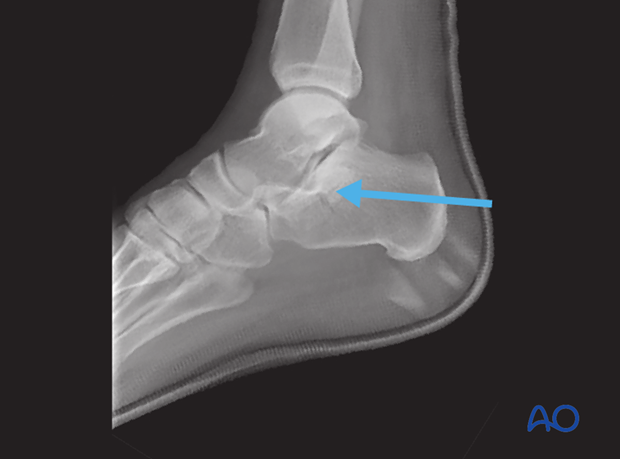
This approach is often helpful to assist in debriding open fractures of the calcaneus, as virtually all open fractures occur over the sustentacular fragment medially when it pierces the skin.

2. Anatomy
The medial approach uses the medial malleolus and the navicular as landmarks. By drawing a perpendicular line down from the medial malleolus and by drawing a line proximal from the navicular, they meet at the sustentaculum tali. The incision follows the neurovascular bundle from just behind the medial malleolus to almost the navicular. Once the skin incision is made, the neurovascular structures are evident. The interval which one develops is between the posterior tibial nerve and the flexor hallucis longus tendon. The sustentaculum is a sharp bony prominence which is easy to find distal to the medial malleolus.
Dissection deep to the flexor hallucis reveals the sustentaculum tali and the medial wall of the calcaneus.
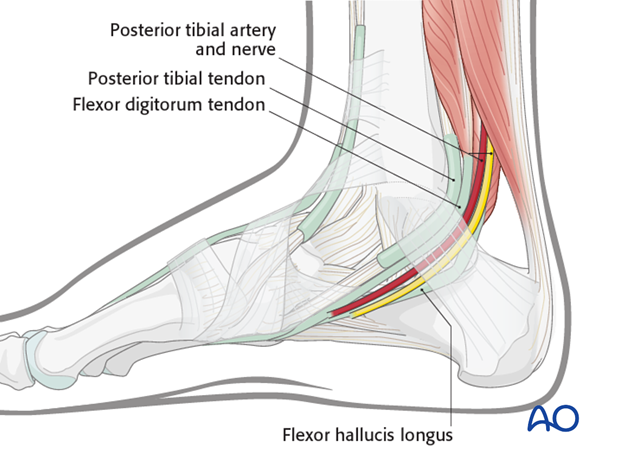
3. Incision
Skin incision
The center of the incision is 2 cm beneath the medial malleolus and 2 cm proximal to the navicular.
To achieve adequate visualization of the sustentaculum, it needs to be about 5 cm in length, following the neurovascular structures.
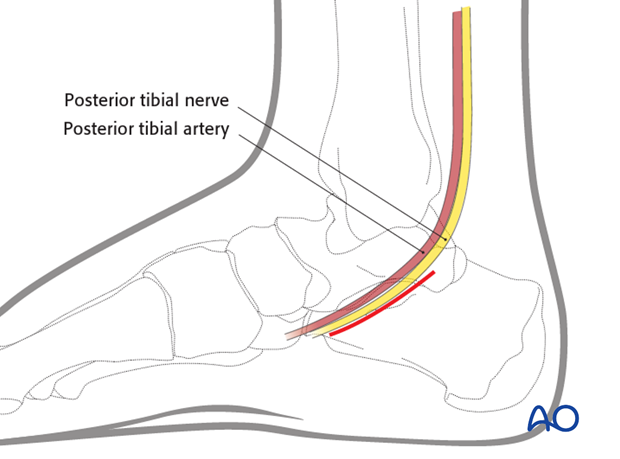
Superficial dissection
Once beneath skin, identify the posterior tibial tendon, the neurovascular bundle and the flexor hallucis tendon. The interval to develop is between the neurovascular bundle, specifically the posterior tibial nerve and the flexor hallucis tendon, which is retracted distally. You must incise the retinaculum and feel for the bump which is the sustentaculum. It is immediately above the flexor hallucis tendon.
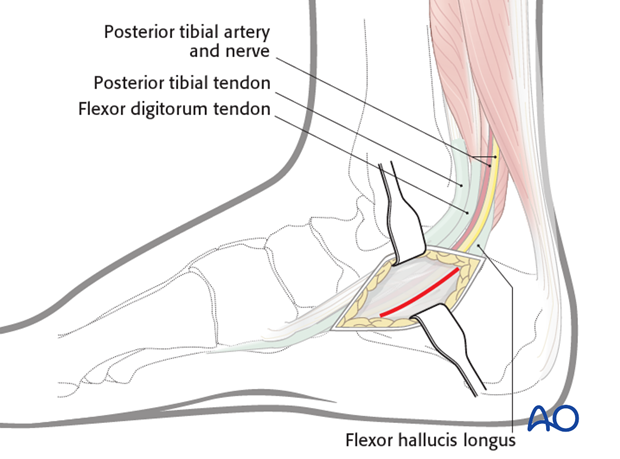
Deep dissection
The sustentaculum is a bony prominence which is obvious once one is beneath the medial neurovascular structures. Usually, fixation is placed into the calcaneus immediately below the sustentaculum, which has been fractured and displaced plantarwards.
Image intensification will verify the surgeon’s position in this deep approach.
The small bony fragment mandates use of mini fragment fixation.
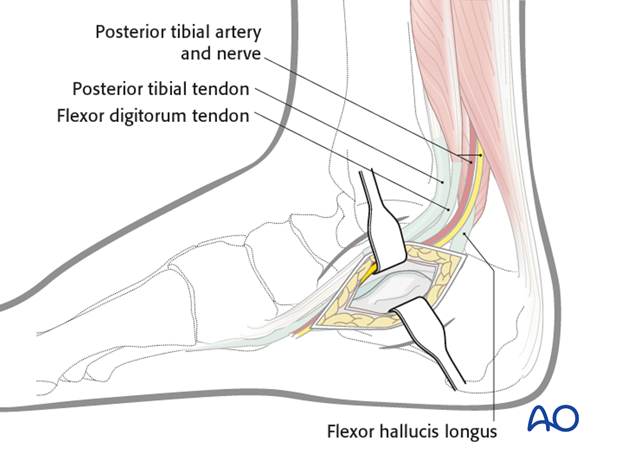
4. Wound closure
Wound complications are rare on the medial side.
This approach is closed with an interrupted subcutaneous stitch and an interrupted skin stitch.












